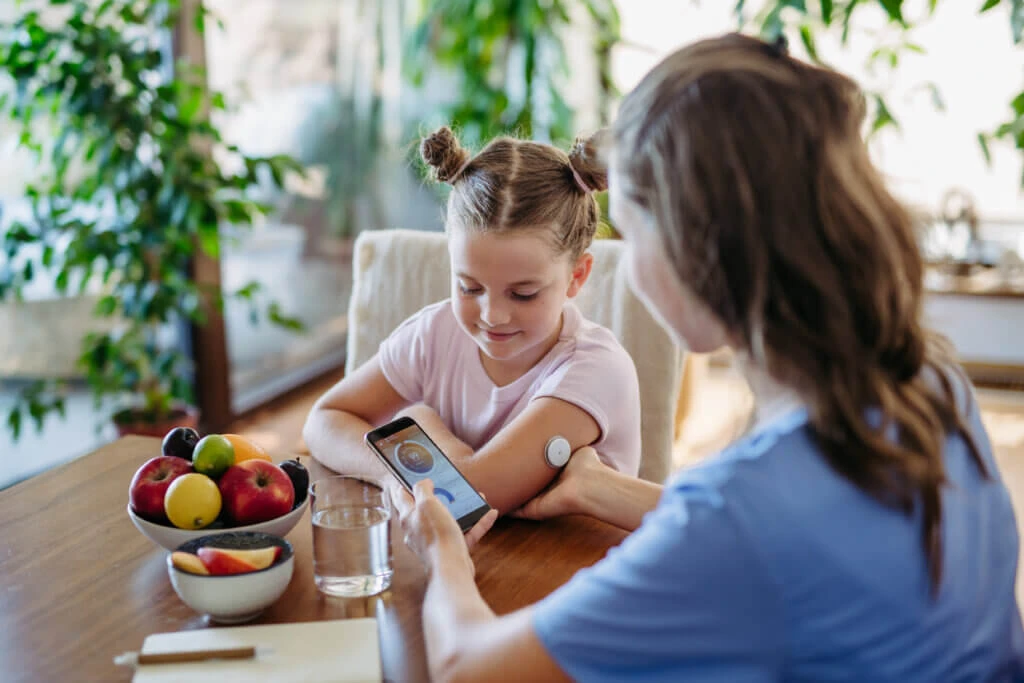
In today’s healthcare landscape, patients are empowered by health technologies such as wearables, mobile apps, and telehealth platforms, becoming active pursuers of care who expect healthcare to meet them on their terms—seamlessly integrated into their daily routines. The $1.8 trillion U.S. Wellness Economy underscores this shift toward proactive, engaged health consumers demanding more personalized, real-time interactions from their providers and healthcare brands (Global Wellness Institute 2024).
For healthcare marketers, this presents both an urgent challenge and a tremendous opportunity. As the lines between healthcare delivery and everyday life blur, brands and agencies must rethink their approach to patient and provider engagement. The rise of healthcare consumerism and the Internet of Medical Things (IoMT) is creating new touchpoints in the patient journey, as patients engage daily in consumer-grade wearables or at destinations, like point of care devices and kiosks. Marketers can now directly educate patients and improve outcomes through timely, targeted messaging—whether in-office, through virtual care, or newly emerging Points of Care (POC).
This transformation is evident in evolving marketing strategies that are adapting to new consumer health journeys and contexts. In some instances, Out-of-Home advertising is merging with POC initiatives. Agencies are using geofencing to create health-related content around clinics and developing connected patient journeys outside traditional healthcare provider (HCP) interactions. Larger brands are deepening investments in personalization to align with changing consumer behaviors. Patients now expect more than reactive care; they seek active involvement in their health decisions and demand the same engagement from their providers and supporting brands. The new directive for brands is clear: be present wherever patients are.
Leveraging IoMT and advanced digital health tools allows marketers to redefine POC education by delivering relevant, personalized content to HCPs and patients at critical moments.
The Changing Patient Journey: From Passive to Active Participation
Building upon this shift, patients are leveraging technology to become true partners with their healthcare providers. With on-demand access to their health data—tracking everything from sleep patterns, blood sugar levels to fertility and mental health—they use digital tools like telehealth, mobile apps, and wearables to take charge of their well-being. In fitness technology alone, U.S. consumers spent $17.5 billion last year, underscoring the growing demand for self-managed health solutions (Global Wellness Institute 2024). Our love of health technology is highly aligned to medical innovation—with today’s smartpills tracking internal health metrics, healthtech can be a deep and transformative part of our life.
As Boston Consulting Group (BCG) noted, “Patients are evolving from passive stakeholders to active co-creators of health care systems. This evolution will amplify the patient’s voice, emphasize personalized care, and leverage valuable data to drive continuous improvement” (BCG 2024). Patients are becoming not only participants but key influencers in their health outcomes. A meta-analysis of over 20 studies involving 1,400 patients aged 18 to 60 revealed that app-based interventions significantly improved both behavioral and medication adherence (BCG 2024).
These consumer shifts are transforming the broader social and work environments where healthcare decisions are made. A decade ago, conditions like anxiety or infertility were discussed quietly in a doctor’s office. Today, these topics are managed openly through virtual health platforms and corporate wellness programs, signaling a normalization of self-directed wellness demands. The doctor’s office is also evolving, now required to consider the whole patient—using gender-affirming pronouns and accounting for lifestyle and cultural differences. Patient-centered approaches must unify providers and marketers to be resonant, trusted, and inclusive.
Despite the growing adoption of virtual care, in-person care remains the most utilized option. Nonetheless, patients and physicians recognize the benefits of virtual care, particularly for follow-ups and routine check-ins, making the hybrid care model an avenue for enhanced patient engagement.

No Patient Left Behind
However, we must be mindful of equity. As corporations expand health services as perks attractive to a pro-health audience and new technologies emerge, we must ensure we don’t accidentally render invisible the people who could be left behind due to financial or technology barriers. When paying to play could have severely deleterious effects, it is crucial that healthcare innovation doesn’t exacerbate existing inequities.
Not everyone has equal access to these advancements. The success of digital health interventions depends heavily on the broader context of patients’ lives. Socioeconomic factors, environmental stressors, and access to resources significantly influence whether patients can engage with these tools. As highlighted by Harvard Business Review, “60% of our health outcomes are influenced by behavioral and environmental factors: where we are born, grow, live, work, and age.” (HBR 2019). Without stable housing, reliable internet, or access to nutritious food, many patients may struggle to benefit fully from telehealth or app-based interventions, making equitable POC marketing strategies more important than ever.
Some healthtech providers are working to bridge this gap. For example, Constant Media created a free wearable device offering real-time health vitals to a broader population, advancing POC technology and increasing patient engagement.
Marketers must proactively ensure inclusivity in these new touchpoints. It is critical to address the entire scope of the patient’s life, providing personalized, contextualized support that enhances engagement and drives better health outcomes, while ensuring that no one is left behind.
IoMT and AI: The Backbone of Modern Healthcare Personalization
Point of Care education and technology are vital for navigating the vast sea of patient-generated health data. The future of healthcare is undeniably data-driven, with consumers enthusiastically steering the course. People love their tech and expect healthcare to embrace the data revolution with equal enthusiasm. While data serves as a Rosetta Stone for those with medical knowledge—deciphering vital insights that give context to health events over time—most patients struggle to interpret the complex information they receive. This leaves them vulnerable to misinterpretation or, worse, to misguided advice from non-professionals in the health industry.

As early as five years ago, the shift towards data-based healthcare was becoming clear. “One survey found that 62% of patients said they would choose a doctor who used data from wearables over one who did not” (HBR 2019). The interplay between the Internet of Medical Things and Artificial Intelligence is propelling this expectation further. These technologies work together—IoMT continuously gathers vast amounts of health data, while AI processes it to suggest next-best-action (NBA) strategies personalized to each individual. Whether it’s selecting a medication based on decades of health history or identifying patients with a higher likelihood of rare conditions, AI’s ability to find the signal in the noise is a lifeline for busy practitioners.
However, for these tools to truly transform healthcare, they must be integrated into the broader care continuum, guided by healthcare professionals. Without this oversight, they risk becoming just another set of gadgets, leaving patients with data but no clear direction.
As we explore the transformative potential of IoMT and AI in personalizing healthcare experiences, real-world applications like Myelo showcase how these technologies are actively reshaping patient engagement.
Myelo: An AI-Powered Companion Transforming Patient Engagement
A compelling example of how AI and IoMT are reshaping patient journeys is Myelo, a groundbreaking generative AI chatbot developed through a collaboration between ZS and the International Myeloma Foundation (IMF). Myelo is a 24/7 virtual assistant, specifically designed to support patients, caregivers, and healthcare professionals navigating the complexities of multiple myeloma.
Empowering Patients with Accessible Information
Patients often find themselves overwhelmed by medical jargon or uncertain about treatment options, sometimes at inconvenient hours like 3 a.m. Myelo addresses these challenges by:
- Simplifying Medical Terminology: Translating complex terms into easy-to-understand language, helping patients comprehend their diagnosis and treatment plans.
- Guiding Treatment Decisions: Providing information on various treatment approaches, enabling patients and caregivers to make informed choices.
- Supporting Caregivers: Offering suggestions for communication and teamwork within families caring for a loved one with myeloma.
Myelo navigates the IMF’s extensive resources to deliver immediate, accurate answers, complete with source links for further exploration. Moreover, it is able to answer questions in multiple languages, ensuring inclusivity and accessibility for a diverse patient population–potentially driving adherence by deepening receptivity, supporting health literacy, and amplifying understanding.

Enhancing Healthcare Professional Resources
Beyond patient support, Myelo serves as a valuable tool for healthcare providers by:
- Disseminating Latest Research: Keeping physicians and medical staff informed about new developments, clinical guidelines, and treatment protocols in multiple myeloma.
- Facilitating Continuous Learning: Providing easy access to a wealth of scientifically vetted information, supporting evidence-based practice.
Bridging Technology and Compassionate Care
The development of Myelo illustrates the profound impact that AI and IoMT can have on patient empowerment and education–this time through support. It demonstrates how technology can:
- Enhance Patient Autonomy & Care Support: Providing resources that enable patients and caregivers to take more active roles in health decisions.
- Improve Health Literacy: Making complex medical information accessible and understandable.
- Support Continuous Care: Offering assistance beyond the confines of traditional healthcare settings and hours.
The success of platforms like Myelo underscores the critical role that technology plays in modern healthcare. For healthcare marketers, this shift presents unique opportunities and challenges in designing strategies that resonate with empowered patients and integrate seamlessly into their daily lives.
Implications for Healthcare Marketers
Translating and creating actionable health paths from the data patients are tracking is where brands and marketers can step in. Both patient education and healthcare practitioners play a crucial role in making sense of the data patients are tracking. While a health app may notify patients when their data is outside normal ranges, it cannot explain the underlying causes or guide patients on how to respond. Tech adoption may be high, but the need for medical professionals to interpret the data and turn it into actionable insights is greater than ever. In this light, the rise in technology has only increased the need for more Point of Care education and deeper collaboration between practitioners and technology to transform raw data into meaningful care.
A few use cases:
- Continuous Glucose Monitors (CGMs): These devices provide real-time updates on blood sugar levels for diabetic patients. With care team oversight, physicians can dynamically adjust treatments based on these insights, offering a comprehensive view of the patient’s health.
- Connected Inhalers: These devices remind patients to take preventive measures when allergen levels are high and send data directly to healthcare providers through patient portals. This feedback loop allows physicians to monitor adherence and improve patient outcomes.
- Virtual Care Services: Wearable data can be integrated into telehealth consultations, enabling physicians to make real-time recommendations based on current health metrics.
IoMT devices truly deliver care when there is provider oversight, interaction, and intervention. This collaboration transforms healthtech from a pastime into powerful patient health components within the POC ecosystem. A fitness tracker or consumer health app may help patients monitor their activity, but without a healthcare provider’s involvement, they remain limited. Better integration—allowing health data to act as patient education triggers or HCP signals for diagnosis, care paths, and support materials—would be powerful ways to bring consumer interest into healthcare progress.

Attuning POC to Modern Engagement Technologies
POC marketing is evolving beyond traditional in-office interactions to encompass a broader spectrum of patient touchpoints. With the growing prevalence of telehealth, virtual wards, and especially pharmacy interventions, POC messaging now has the potential to reach patients throughout their entire care journey—both in digital and physical spaces.
There is a misconception that digital interventions might replace the personal relationships fostered by healthcare professionals. In reality, new technologies enhance these relationships by providing additional tools for communication and engagement. People inhabit both digital and physical environments, and their healthcare experiences reflect this duality. Preferences vary not only among different individuals but also within a single person’s experience, depending on context and need.
The Pharmacy: An Example of Integrated POC Strategy
Pharmacists engage with patients more frequently than in other settings. They use their unique position to employ multiple POC tactics and cross-channel strategies to unify providers and patients toward stronger outcomes.
Research indicates that digital tools in pharmacy practice have led to significant advancements in patient care. The Journal of Health, Population and Nutrition (2024) highlights that the integration of digital health technology is pivotal in addressing medication nonadherence—a critical issue in healthcare. Pharmacies are now employing tools such as SMS reminders, mobile applications, and innovative devices like virtual pillboxes and intelligent pill bottles. These advancements “are empowering pharmacists with expanded clinical responsibilities,” particularly in managing chronic diseases like diabetes. Through apps and smart devices offering features such as blood glucose tracking and medication reminders, pharmacists provide essential support that enhances patient engagement and adherence.
This comprehensive integration of digital health into pharmacy practice signifies “a transformative era in healthcare delivery and patient management.” (J Health Popl Nurt 2024) By blending traditional in-person consultations with digital tools, pharmacies enhance the pharmacist-patient relationship rather than replacing it. This synergy exemplifies how any Point of Care can utilize multiple POC tactics and cross-channel strategies to improve patient outcomes.
The Future of POC Marketing: Virtual Wards and AI-Driven Care
As virtual hospital wards and remote patient monitoring systems become more prevalent, POC marketing must extend beyond traditional office-based interactions. These technologies enable continuous patient monitoring, enhance patient autonomy, and reduce hospital readmissions. BCG predicts that “the number of ‘virtual wards’ will go from the tens of thousands to the hundreds of thousands… They are set to enhance patient outcomes and increase patient autonomy and choice while contributing to cost efficiency” (BCG 2024).
Virtual wards serve as another example of how emerging technology is influencing brick-and-mortar and traditional institutions. They represent a shift in care delivery models, offering patients hospital-level care in the comfort of their homes. This evolution necessitates that POC strategies adapt to these new settings, ensuring patients receive personalized content and support throughout their entire care journey.
Healthcare marketers should design POC strategies that encompass remote care environments, ensuring patients receive personalized content and support throughout their entire care journey. Leveraging telehealth platforms, IoMT devices, and AI-driven insights to deliver interventions at critical points will be essential. By doing so, marketers can maintain engagement, promote adherence, and support better health outcomes in an increasingly digital healthcare landscape.

Bridging Digital and Physical Care
This integrative approach extends beyond pharmacies. Mobile health (mHealth) interventions have demonstrated significant benefits across various healthcare settings. Studies have shown that mobile-based interventions reduce rehospitalization rates, improve patient knowledge, and increase adherence to cardiovascular disease (CVD) management plans. These interventions are most effective when they incorporate real-time data tracking, virtual positive reinforcement, and facilitate patient-provider communication through apps (Glob Heart 2022).
As noted in Global Heart (2023), smartphone-based interventions are “relatively inexpensive, accessible anytime at the patient’s own comfort, and easy to use.” Similarly, text message programs have proven effective in managing single risk factors such as tobacco smoking, high blood pressure, and medication adherence. In a randomized controlled trial, sending semi-personalized text messages to patients significantly improved key health metrics like blood pressure, body mass index (BMI), and physical activity levels. The co-design of these messages with patients and clinicians was crucial to their success, highlighting the importance of personalized, real-time communication.
The blended personal HCP communication from the point of care with multichannel interventions positively impacts patient behavior for better outcomes, but the timely delivery of patient education can also combat misinformation that can corrode trust in HCPs and decrease adherence. Numerous instances have shown impactful changes in adherence when patient engagement from the point of care is present, including pharmacy interventions, text messaging, and support by medical staff that aims at dispelling false beliefs or medication concerns (Health Psychology, 2024).
Embracing Outcomes-Based Healthcare with Real-World Data
The shift toward outcomes-based healthcare places real-world data at the forefront of demonstrating the effectiveness of treatments and interventions. For POC marketing, this means leveraging data to show how products or services not only engage patients and HCPs but also tangibly improve patient outcomes.
As BCG emphasizes, “Outcomes that lead to reimbursement in treating patient conditions will be essential to the survival of digital companion and digital health solutions” (BCG, 2024). Healthcare marketers must highlight real-world outcomes in their messaging. Demonstrating that a telehealth solution has reduced hospital readmissions or improved medication adherence can resonate deeply with both patients and HCPs. This evidence-based approach strengthens the credibility and impact of POC campaigns, aligning them with the industry’s move toward value-based care.
Strategic Multi-Channel POC Marketing
Healthcare marketers should focus on delivering multi-channel POC messaging that seamlessly integrates both digital and print formats across various Points of Care. By leveraging virtual care platforms, SMS, health apps, pharmacy interventions, and other digital forms of provider-patient communication, marketers can maintain engagement between in-person visits. This continuous interaction builds patient satisfaction, reinforces adherence, and drives positive outcomes long after the patient leaves the office.
For example, a patient’s journey might begin with targeted messaging in the waiting room, connected to in-office education based on diagnostic codes entered into the Electronic Health Record (EHR). The patient then receives a print brochure with a coupon code and a QR link to patient support resources. Later, when visiting the pharmacy, they might receive personalized medication reminders through a pharmacy app and have access to virtual consultations with the pharmacist. These integrated touchpoints ensure that the patient is supported at every stage of their healthcare journey.
By recognizing that patients move fluidly between digital and physical environments, healthcare brands can create cohesive, personalized experiences that respect individual preferences and contexts. Pharmacies, in particular, demonstrate how integrating multiple POC tactics across channels can enhance patient engagement and outcomes.
Building a Comprehensive, Data-Driven POC Strategy
To remain competitive in the evolving healthcare environment, POC marketing strategies must integrate the power of IoMT, AI, and real-time data. By harnessing these technologies, healthcare marketers can deliver personalized, outcome-based messaging that resonates with both patients and HCPs. This comprehensive approach not only meets the expectations of modern, proactive patients but also aligns with the industry’s shift toward value-based care and measurable outcomes.
Brands have tremendous opportunity to pioneer a sustainable path into the future of healthcare by actively creating spaces where proactive patients, practitioners, and technology intersect. By focusing on inclusivity, leveraging real-world data, and integrating digital advancements into traditional care settings, marketers can redefine POC education and engagement. In doing so, they ensure that both patients and providers are equipped with the tools and information needed to make informed decisions, ultimately driving better health outcomes for all.
